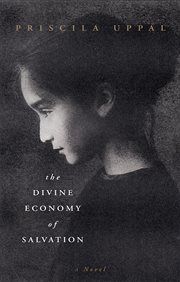Details
PUBLISHED
Made available through hoopla
DESCRIPTION
1 online resource
ISBN/ISSN
LANGUAGE
NOTES
"A luminous debut . . . Haunting, gripping, and surprisingly nuanced . . . A work of great depth and seriousness." -Kirkus Reviews When Sister Angela receives an anonymous package containing an ornate silver candlestick, an object she hasn't seen in twenty-five years, her safe and secure life begins to shatter. Suddenly, she must confront her darkest secret: her participation in a crime from which she can no longer hide. As she sets about discovering who sent her the package, memories of St. X. School for Girls come back to haunt her. At the center is a group of girls who call themselves The Sisterhood, from whom fourteen-year-old Angela desperately seeks comfort and approval. Saddened by her mother's declining health and her father's abandonment, Angela looks up to the group's beautiful and alluring leader, Rachel. When she is encouraged by Rachel to play a joke on another student, the rituals of The Sisterhood take a violent turn. Now, from within the safe refuge of her convent and with the unexpected help of a young pregnant girl, Angela at last faces the truth-and the boundaries of faith. In the tradition of The Secret History and Lying Awake, The Divine Economy of Salvation is a dark, powerful, and suspenseful story that captures the innocence and cruelty of adolescence and the mysteries of adulthood. Priscila Uppal lives in Toronto, where she teaches full time in the Humanities division at York University. The Divine Economy of Salvation is her first novel. My name was Angela H. then. You may remember me. We went to school together at St. X. School for Girls. I had long brown hair, cut at the waist in a single straight swipe, and I used to wear a tiny silver chain with a faux-gold locket in the shape of a heart, a picture of my mother inside. We knew each other. We all did. By name or by deed. Or at least I thought so at the time. I've had plenty of time here, plenty of time to think about the past and what we did know, or thought we knew, about what we, what I, have done. The air is thick as the stone walls with memories, with ghosts of us. I do not think it sacrilegious to speak so about ghosts. Jesus Christ is a ghost, the Holy Spirit is a ghost, the Bible tells us. I imagine God too, omnipresent and without form, is a ghost haunting my night. A wind in this darkness. I have food and water, a bed and paper. This is all I need. You may remember a few of the girls began a group, The Sisterhood, and we snuck out of our dormitory rooms to meet. You and I, we were invited to join. We met in the dark of the hallway, our movements anxious, almost animal, feeling our way to Room 313, Rachel's room, the girl with the shoulder-length blonde curls and light-green eyes, the one we wanted so to impress, the one we believed was the strongest. I can still smell the sweet perspiration, girls' clean preadolescent sweat. It is different from the sweat here, a grown woman's sweat we try to hide by doing the wash early in the morning after pacing in our rooms, restless, alone. The hard sweat of layers of clothing, the heavy habits if we choose to wear them, the blankets we pile on top of our bodies to keep us covered at night. Or the cold, blank sweat of the nightmares many of us have. Before I moved in here, I never would have thought so many nightmares should fill a place of God. Prince of Peace. But I guess we did know. We lived one of our own at St. X. School for Girls. Our sheets were washed then too. The stains of sin, Sister Marguerite would have said, her large chest pounding like a needle on a sewing machine. No one ever found out what happened in Room 313. That's the part that disturbs me most in the middle of the night in this tiny basement room, a single window the height and width of one of the bricks at ground level. I watch feet go by, have come to identify the different boarders and visitors by the kinds of shoes or boots they wear. By the noises they make treading on the grounds. How our footsteps
Mode of access: World Wide Web







